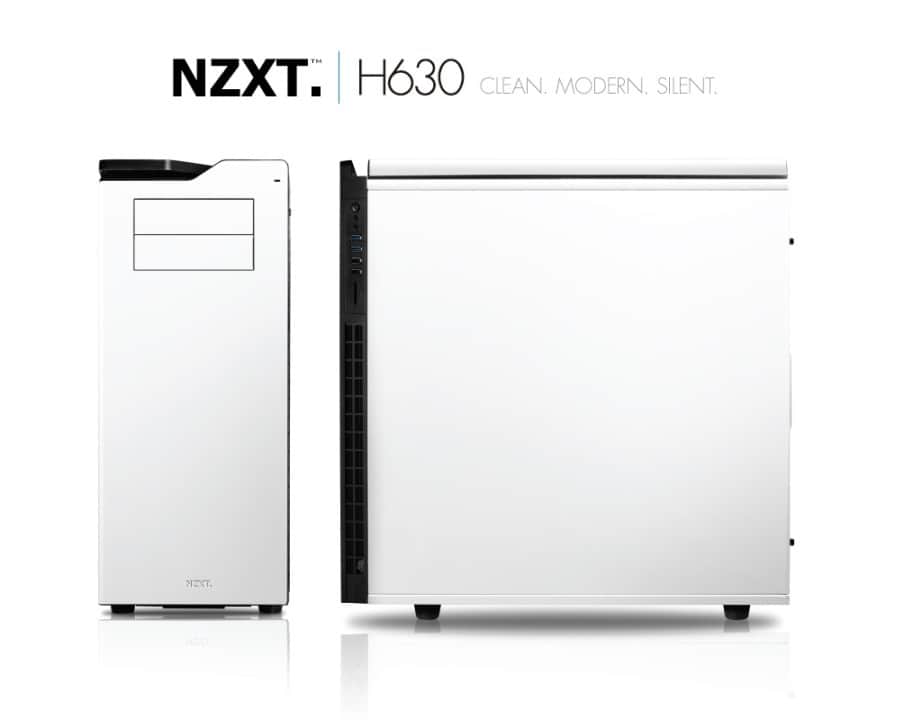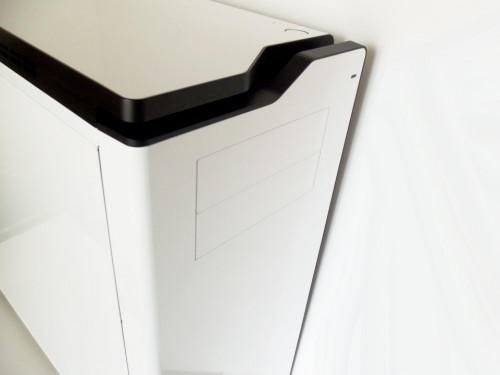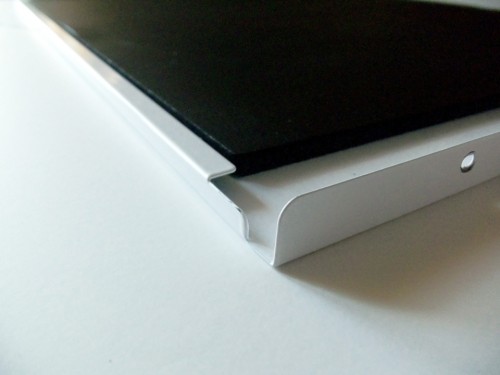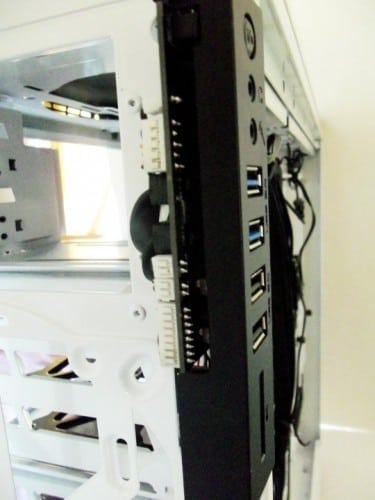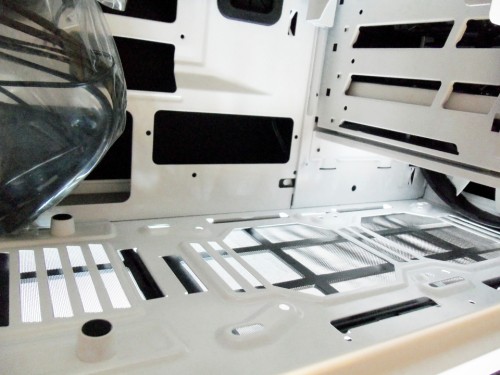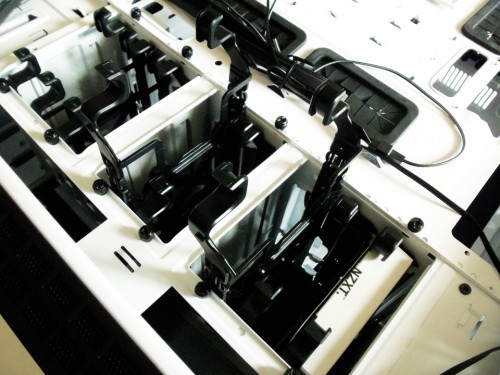Closer Look at the Exterior
The H630 is a simple design, but hides a lot of nice surprises in the details. It has a sleek, clean design with rounded edges for a modern look which is something we love. The design is complemented by the mirror finish paint which is also fingerprint, scuff, and dirt resistant. It is extremely easy to keep this case looking great with a damp cloth once in a blue moon. The “Snow White” edition H630 we received has the same feel as a new car which is a damn good first impression.
One of the key features of the H630 is the high density sound damping material attached to the side, top, and front panels. The side panel is all steel, heavy, and has very little flex to it which gives it a quality feel. The front and top panel are dense plastic shells with an all steel face and side ventilation. The front vent doubles as a removable dust filter. Surprisingly the front panel does not house the front I/O which is actually attached to the case frame. We really like this choice as the front panel can be completely removed without fear of tearing out wires.
The I/O panel includes some nice goodies as we discussed, but still has a few more secrets. As we’ve found, the front I/O includes the addition of a built-in SD card reader (supports SDHC and SDXC) and a pop-out style switch for the rear lights. What you will not find is a power indicator light, at least not until you power up your computer. The power light is built into the power button and glows through it on the top of the case. We would have liked to have seen the front I/O placed on top as well since it can be difficult to reach if you sit to the left of the H630.
The NZXT H630 is our kinda of case with focus on the details and plenty to offer. It may not be the perfect case for everyone as the front ODD bay only houses two. This can be an issue for those using a front mounted water reservoir or a two panel fan controller, and may still want to keep space for an optical drive. We would really like to have had three bays here. There is also no side window, but in its defense, the H630 is about low noise. Besides, NZXT offers plenty of other options in this price range if you want a little more flash for your cash.
Closer Look at the Interior
NZXT keeps their attention to detail and high quality workmanship when it comes to the interior. You will find the high quality paint continuing throughout the interior with black accent pieces such as the steel ODD latches, motherboard standoffs, color of damping foam, cables, etc. All of the edges here are rounded as well with no sharp edges to be found.
Once again NZXT hides a few nice features in the interior design of the H630. There is plenty of space behind the motherboard tray for cable management which NZXT starts for you with the pre-installed fans already connected to the fan hub. There are slots cutout with rounded edges to guide wires around the case. The main wire cutouts have black rubber grommets to maintain a clean look when done.
The H630 hard drive cage is a little more unique than we first expected. It is designed as three separate cages in a 3-2-3 configuration. You can remove any of them to fit your needs, like accomodating extra-large graphics cards, water cooling systems, or improving airflow. It is also inverted so you have to remove the right side panel to access the plastic drive trays. While one of the few plastic parts in the H630, they are very strong, easy to use, and fit snuggly into the cage slots. Thanks to rubber grommets, vibration from HDD noise is reduced.
Every aspect of the design focuses on minimizing noise. For example, the power supply sits on top of foam tipped rests above the case wall to avoid vibration noise and prevents airflow restrictions. The fan slots at the top, bottom, and front of the case have no grill which minimizes air restriction. The only fan slot with a grill is the rear one which also creates the most noise in the case. We’ll get into this more in our testing.
Speaking of testing, it’s now time to put a system in this box and find out more about its performance characteristics.

